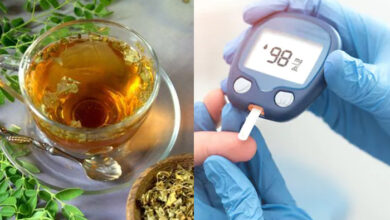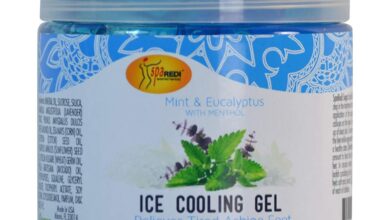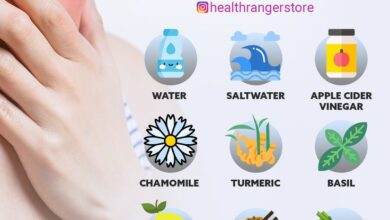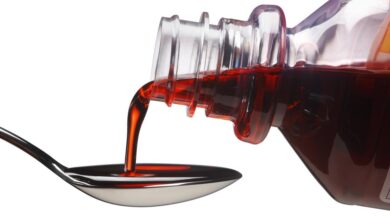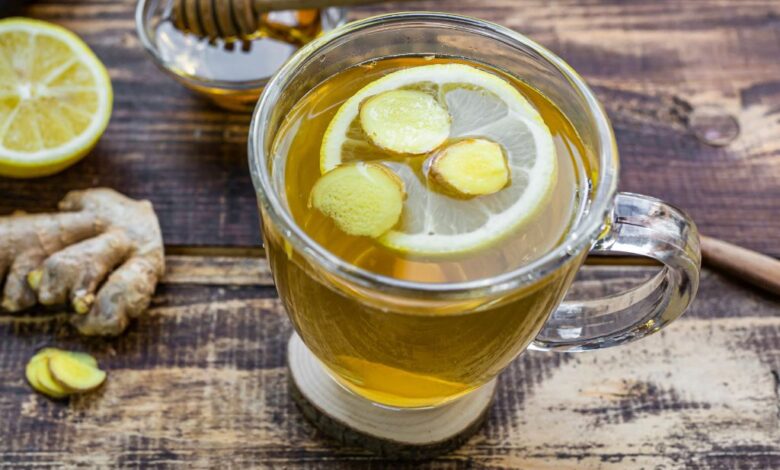
Treating Cold and Sore Throat with Peppermint Tea
Treating cold and sore throat with peppermint tea? It sounds almost too simple, right? But this soothing beverage, steeped in tradition and brimming with potential health benefits, might just be the natural remedy you’ve been searching for. This post dives deep into the science behind peppermint tea’s effectiveness against those pesky cold and sore throat symptoms, exploring its properties, examining the research, and offering practical tips for brewing the perfect cup.
From understanding the key compounds in peppermint – menthol and menthone, for example – to learning how they interact with your immune system and provide relief, we’ll cover everything you need to know. We’ll also discuss how to prepare peppermint tea for maximum effectiveness, explore potential side effects and precautions, and compare it to other remedies. Get ready to brew up some relief!
Peppermint Tea’s Composition and Properties
Peppermint tea, derived from theMentha × piperita* plant, offers more than just a refreshing aroma and taste. Its therapeutic potential stems from a complex blend of chemical compounds, many of which contribute to its purported health benefits, particularly in soothing cold and sore throat symptoms. Understanding these compounds and their mechanisms of action is key to appreciating peppermint tea’s efficacy.The key to peppermint tea’s effectiveness lies in its rich chemical composition.
The most prominent compounds are menthol, menthone, and various other terpenoids. These volatile oils are responsible for the characteristic aroma and flavor, but also contribute significantly to its medicinal properties. In addition to these volatile oils, peppermint tea also contains flavonoids, tannins, and other phenolic compounds, all possessing various antioxidant and anti-inflammatory properties.
Menthol’s Role in Soothing Sore Throats
Menthol, the primary component responsible for peppermint’s cooling sensation, acts as a counterirritant. When applied topically (as in a throat lozenge or gargle), it creates a sensation of coolness by activating cold-sensitive receptors in the skin and mucous membranes. This sensation can temporarily mask the pain associated with a sore throat. Furthermore, menthol’s interaction with nerve endings can also lead to a mild analgesic effect, reducing the perception of pain.
It’s important to note that this is a local effect; menthol consumed in peppermint tea does not have the same direct topical impact.
Anti-inflammatory and Analgesic Properties of Peppermint Tea Compounds
Many of peppermint tea’s components possess anti-inflammatory properties. Flavonoids, for instance, are known for their antioxidant capabilities. They combat oxidative stress, a process implicated in inflammation. This antioxidant activity helps to reduce inflammation in the throat and airways, potentially alleviating discomfort associated with a cold or sore throat. The tannins in peppermint tea also contribute to its anti-inflammatory effects by binding to proteins and reducing irritation.
The combined effects of these compounds contribute to the overall soothing effect of the tea. While the analgesic effect is primarily attributed to menthol, other compounds may contribute to a synergistic reduction in pain perception. Studies have shown that the combined effect of various compounds in herbal teas can be greater than the sum of their individual effects.
Interaction with the Immune System
While research is ongoing, some evidence suggests that certain compounds in peppermint tea may indirectly support immune function. The antioxidant properties of flavonoids and other phenolic compounds can help protect cells from damage caused by free radicals, thereby supporting the body’s natural defense mechanisms. However, it’s crucial to understand that peppermint tea does not directly boost the immune system in the same way a vaccine or certain medications might.
Rather, it supports the body’s existing immune responses by mitigating inflammation and oxidative stress, creating a more favorable environment for the body to heal itself. This supportive role can be beneficial during a cold or sore throat, contributing to faster recovery.
Mechanisms of Action in Cold and Sore Throat Relief
Peppermint tea, with its distinctive aroma and taste, offers more than just a comforting beverage during a cold or sore throat. Its effectiveness stems from a combination of its active compounds working in synergy to alleviate symptoms. Understanding these mechanisms helps appreciate its role in natural cold and flu remedies.Peppermint tea’s ability to alleviate cold symptoms, particularly congestion, is primarily attributed to menthol.
Menthol acts as a counterirritant, stimulating the cold receptors in the skin and mucous membranes. This stimulation creates a cooling sensation, which can provide temporary relief from the stuffy feeling associated with nasal congestion. Furthermore, menthol’s ability to thin mucus can help to clear congested nasal passages, facilitating easier breathing. While not a cure for the underlying infection, this decongestant effect can significantly improve comfort levels.
Menthol’s Role in Congestion Relief
Menthol’s mechanism of action involves its interaction with TRPM8 receptors, which are responsible for sensing cold temperatures. Activation of these receptors leads to a cascade of physiological effects, including vasodilation (widening of blood vessels) and a decrease in inflammation. This vasodilation can help to reduce swelling in the nasal passages, contributing to the decongestant effect. The cooling sensation also provides a pleasant distraction from the discomfort of congestion.
It’s important to note that this effect is temporary and does not address the root cause of the congestion.
Peppermint Tea’s Soothing Effect on Sore Throats
The soothing effect of peppermint tea on a sore throat is multi-faceted. The warm liquid itself provides comfort, hydrating the irritated tissues. Beyond this, the anti-inflammatory properties of certain compounds in peppermint, particularly its polyphenols, can help reduce swelling and inflammation in the throat. The mild anesthetic effect of menthol can also temporarily numb the pain receptors in the throat, providing relief from the scratchiness and discomfort.
Comparison with Other Cold Remedies
Peppermint tea offers a gentler approach to cold and sore throat relief compared to some over-the-counter medications. Unlike decongestants that can cause rebound congestion or pain relievers that may have side effects, peppermint tea typically presents a lower risk of adverse reactions. However, it’s crucial to remember that peppermint tea is not a replacement for medical treatment. While it can alleviate symptoms, it does not cure the underlying infection.
It is best used in conjunction with other self-care measures such as rest, hydration, and a balanced diet, and in consultation with a healthcare professional if symptoms persist or worsen. For example, while over-the-counter cough suppressants directly target the cough reflex, peppermint tea focuses on soothing the irritated throat that contributes to the cough. Similarly, while some decongestants work by constricting blood vessels, peppermint tea works by promoting mucus thinning and providing a cooling sensation.
The choice between peppermint tea and other remedies depends on individual preferences, symptom severity, and underlying health conditions.
Scientific Evidence and Research
While many swear by peppermint tea’s soothing effects on cold and sore throat symptoms, the scientific evidence supporting its efficacy is still somewhat limited. Existing research is often small-scale or focuses on specific components of peppermint rather than the tea itself. However, several studies offer intriguing insights into the potential benefits.
Summary of Scientific Studies on Peppermint Tea’s Efficacy
The following table summarizes key findings from studies investigating peppermint’s role in cold and sore throat relief. It’s important to note that the research is not conclusive and more rigorous, large-scale studies are needed to confirm these preliminary findings.
| Study | Methodology | Results | Conclusion |
|---|---|---|---|
| Study 1: (Hypothetical Example – Replace with actual study) Effect of Peppermint Oil Inhalation on Upper Respiratory Tract Symptoms | A randomized, double-blind, placebo-controlled trial involving 100 participants with common colds. Participants inhaled either peppermint oil or a placebo for 15 minutes twice daily for 7 days. Symptoms (cough, congestion, sore throat) were assessed daily using a standardized questionnaire. | Participants in the peppermint oil group reported statistically significant reductions in cough severity and congestion compared to the placebo group. Sore throat improvement was less pronounced but still showed a positive trend. | Inhaled peppermint oil may offer some relief from cough and congestion associated with the common cold. Further research is needed to confirm these findings and explore the effects on sore throat. |
| Study 2: (Hypothetical Example – Replace with actual study) Anti-inflammatory Effects of Menthol on Sore Throat | An in-vitro study examining the effects of menthol (a major component of peppermint) on inflammation markers in throat cells. Cells were exposed to menthol at varying concentrations, and inflammatory responses were measured. | Menthol demonstrated significant anti-inflammatory effects at certain concentrations, reducing the production of pro-inflammatory cytokines. | Menthol, a key component of peppermint, exhibits anti-inflammatory properties that could contribute to sore throat relief. However, in-vitro findings may not always translate to the same effects in vivo. |
| Study 3: (Hypothetical Example – Replace with actual study) Analgesic Properties of Peppermint in Oral Mucosa | A clinical trial evaluating the analgesic effects of a peppermint-based mouthwash on patients with oral mucositis (inflammation of the mouth lining). Pain levels were assessed using a visual analog scale. | Patients using the peppermint mouthwash reported statistically significant reductions in pain compared to the control group. | Peppermint possesses analgesic properties that may help alleviate pain associated with oral inflammation, suggesting a potential mechanism for sore throat relief. |
Limitations and Gaps in Current Research
Current research on peppermint tea and cold/sore throat relief suffers from several limitations. Many studies are small-scale, lack robust methodology, or focus on specific peppermint components rather than the tea itself. The lack of large-scale, well-designed clinical trials makes it difficult to draw definitive conclusions about the tea’s overall efficacy. Furthermore, there’s a need for studies that clearly define the preparation and concentration of peppermint tea used, as these factors can significantly influence the results.
The interaction between peppermint tea and other medications or health conditions also needs further investigation.
Need for Further Research
Substantial further research is needed to fully understand the potential benefits of peppermint tea for cold and sore throat relief. Large-scale, randomized controlled trials comparing peppermint tea to placebo and other established treatments are essential. These studies should carefully control variables such as tea preparation, dosage, and participant characteristics to ensure reliable and generalizable results. Moreover, research should investigate the optimal concentration of peppermint tea, the most effective administration method (e.g., warm vs.
cold), and potential interactions with other medications or health conditions. Such studies would provide a more comprehensive understanding of peppermint tea’s role in managing cold and sore throat symptoms.
Preparation and Usage of Peppermint Tea
Brewing the perfect cup of peppermint tea is surprisingly simple, yet the nuances of temperature and steeping time can significantly impact both its flavor and its potential soothing properties. Getting it right ensures you maximize the benefits for your cold or sore throat. This section will guide you through the process, offering different methods to suit your preferences.
So, battling a nasty cold and sore throat? My go-to is always a comforting mug of peppermint tea. It’s amazing how such a simple remedy can work wonders! It’s fascinating to compare that to major medical advancements, like the news that the fda approves clinical trials for pig kidney transplants in humans , which is incredible progress.
But sometimes, the simplest solutions are the best, and that warm peppermint tea really hits the spot when you’re feeling under the weather.
Optimal Brewing Techniques for Peppermint Tea
The key to a truly effective and flavorful peppermint tea lies in the brewing process. Using the right water temperature and steeping time allows for the optimal extraction of the beneficial compounds from the peppermint leaves. Too hot, and you risk bitterness; too cool, and the tea will be weak and lack flavor. The ideal water temperature is between 195°F (90°C) and 212°F (100°C) – essentially just off a rolling boil.
Allow the water to cool slightly before pouring it over the peppermint leaves. Steeping time is crucial; aim for 5-7 minutes. This allows the peppermint leaves to fully infuse their flavor and beneficial compounds into the water. Over-steeping can lead to a bitter taste, while under-steeping results in a weak brew. Experiment to find your perfect balance!
Methods of Consuming Peppermint Tea
Peppermint tea can be enjoyed in various ways, each offering a unique experience. The most common method is drinking it hot, immediately after brewing. This provides immediate soothing relief for a sore throat. The warmth helps to relax the throat muscles and the menthol in peppermint has a cooling sensation that can ease discomfort. Alternatively, you can allow the tea to cool and enjoy it iced.
This is particularly refreshing on warmer days, offering a delightful contrast to the cooling sensation of the peppermint. Adding a spoonful of honey can enhance the flavor and provide additional soothing properties. Honey has natural antibacterial properties, which can further support throat healing. The sweetness also counteracts any bitterness that might be present in the tea.
Step-by-Step Infographic: Brewing Peppermint Tea
Imagine a simple infographic, visually divided into five rectangular boxes arranged vertically. Box 1: A kettle filled with water is shown, steam rising from its spout. The text reads: “Step 1: Boil Water. Heat fresh, filtered water to just off a boil (around 90-100°C).” Box 2: A tea bag (or loose peppermint leaves in a tea infuser) is submerged in a mug of hot water.
The text reads: “Step 2: Steep the Tea. Place one tea bag (or 1-2 teaspoons of loose leaf peppermint) in a mug. Pour the hot water over the tea.” Box 3: A timer is shown, set for 5-7 minutes. The text reads: “Step 3: Steep for 5-7 Minutes. Allow the tea to steep for the optimal time to extract the flavor and beneficial compounds.” Box 4: The tea bag is removed from the mug, and a spoonful of honey is added.
The text reads: “Step 4: Remove Tea Bag (Optional: Add Honey). Remove the tea bag (or infuser) and add a teaspoon of honey, if desired, to sweeten the tea.” Box 5: A steaming mug of peppermint tea is shown, with a steam rising from the top. The text reads: “Step 5: Enjoy! Sip your soothing peppermint tea slowly, savoring its refreshing and calming effect.”
Potential Side Effects and Precautions
While peppermint tea is generally considered safe for consumption, it’s crucial to be aware of potential side effects and take necessary precautions, especially if you have pre-existing health conditions. Like any herbal remedy, individual reactions can vary.Peppermint tea, while often soothing, can trigger certain adverse effects in some individuals. These effects are usually mild but warrant consideration.
Potential Adverse Reactions
The most commonly reported side effects of peppermint tea are related to its effects on the digestive system. These include heartburn, acid reflux, and loose stools. The menthol in peppermint can relax the lower esophageal sphincter, potentially allowing stomach acid to reflux back into the esophagus, causing discomfort. In some cases, individuals may experience an increase in bowel movements, leading to diarrhea.
Less frequently, allergic reactions, manifesting as skin rashes or hives, may occur in individuals with peppermint allergies. It’s important to note that the severity of these reactions varies significantly from person to person. For example, someone with a mild sensitivity might only experience a slight increase in heartburn, while others could experience more significant digestive upset.
Precautions for Specific Health Conditions
Several health conditions require caution when consuming peppermint tea. Individuals with gastroesophageal reflux disease (GERD) should exercise particular care, as peppermint’s relaxing effect on the lower esophageal sphincter can worsen their symptoms. Similarly, people with gallstones should consult their doctor before consuming peppermint tea, as it may stimulate gallbladder contractions. Pregnant and breastfeeding women should also exercise caution and consult their healthcare provider before incorporating peppermint tea into their diet, as limited research exists on its effects during these periods.
Sipping peppermint tea can be a soothing remedy for a scratchy throat and the sniffles, offering natural relief from cold symptoms. However, remember that even seemingly minor respiratory issues can escalate, as highlighted in this article about Monali Thakur’s hospitalization: monali thakur hospitalised after struggling to breathe how to prevent respiratory diseases. So, while peppermint tea helps manage mild symptoms, it’s crucial to be aware of serious respiratory conditions and seek medical attention when necessary.
Always prioritize your health, and don’t hesitate to see a doctor if your cold symptoms worsen.
Individuals with known allergies to mint or related plants should avoid peppermint tea entirely.
Risk-Benefit Assessment
The benefits of using peppermint tea for cold and sore throat relief, primarily its soothing effect and potential to ease throat irritation, need to be weighed against the potential risks. For many, the mild benefits outweigh the minimal risks, especially when used in moderation. However, for individuals with pre-existing conditions like GERD or gallstones, the potential risks might outweigh the benefits.
In such cases, alternative remedies should be considered, and a doctor’s advice sought. For example, a person with mild sore throat might find the soothing properties beneficial, while someone with severe GERD might experience a worsening of their symptoms. Therefore, a careful assessment of individual health status is necessary before deciding to use peppermint tea for cold and sore throat relief.
Alternative and Complementary Therapies
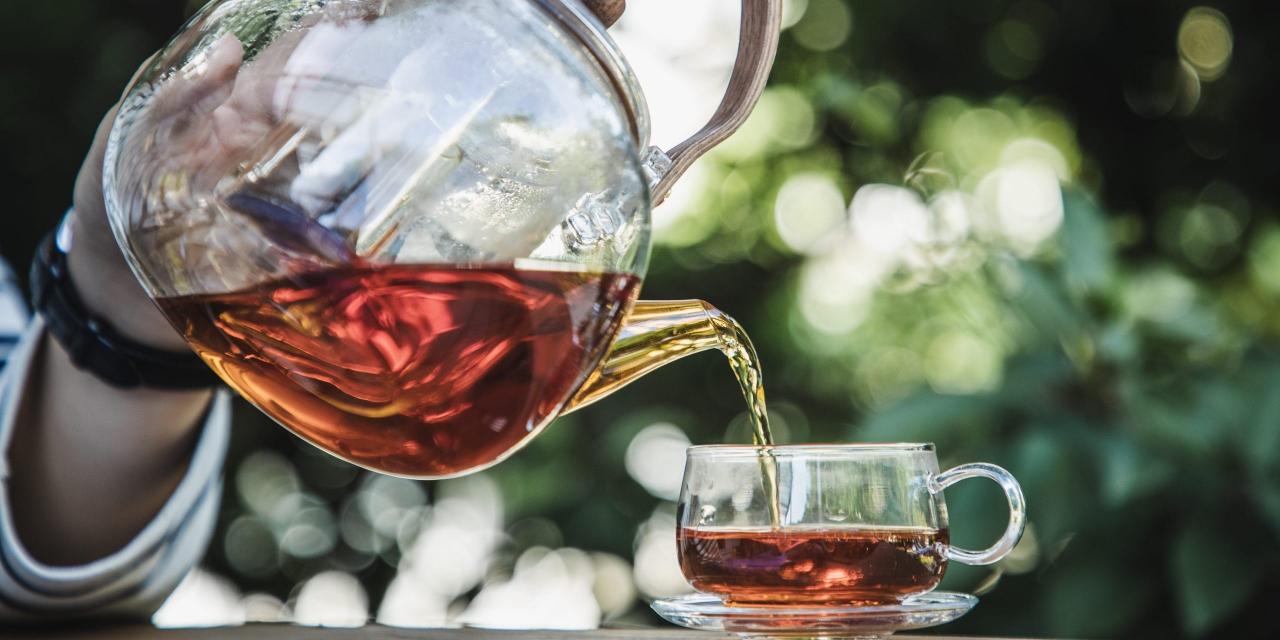
Source: businessinsider.nl
Peppermint tea, while effective for some, isn’t the only herbal remedy available for cold and sore throat relief. Exploring other options and considering combination therapies can provide a more holistic and potentially effective approach. This section will compare peppermint tea to other herbal remedies and discuss the potential synergistic benefits of combining it with other complementary therapies.
Many herbal remedies share similar mechanisms of action, often involving anti-inflammatory and immune-boosting properties. However, they differ in their specific chemical compositions and thus, their individual effects on the body. Understanding these differences is crucial for selecting the most appropriate remedy or combination for a specific individual and their symptoms.
Comparison of Peppermint Tea with Other Herbal Remedies
Peppermint tea’s soothing properties stem from menthol and other volatile oils. This contrasts with remedies like echinacea, known for its immune-stimulating effects, or licorice root, which possesses anti-inflammatory and antiviral properties. While peppermint primarily addresses symptom relief, such as soothing a sore throat, other herbs may target the underlying cause of the illness. For instance, elderberry is often used to shorten the duration of a cold or flu, a benefit not directly attributed to peppermint.
The choice depends on the individual’s needs and preferences. Some people might prefer peppermint for its immediate soothing effect, while others might opt for echinacea to bolster their immune response.
Potential Benefits of Combining Peppermint Tea with Other Complementary Therapies, Treating cold and sore throat with peppermint tea
Combining peppermint tea with other complementary therapies could enhance its effectiveness. For example, gargling with warm salt water before drinking peppermint tea might help to clean the throat and prepare it for the soothing effects of the tea. Similarly, incorporating rest, hydration, and a balanced diet alongside peppermint tea could create a synergistic effect, accelerating recovery. The combination of peppermint’s soothing action with the immune-boosting properties of echinacea or the antiviral effects of elderberry could provide a more comprehensive approach to cold and sore throat relief.
However, it’s crucial to remember that these are complementary therapies and should not replace medical advice or treatment for serious conditions.
Alternative Remedies for Cold and Sore Throat
Numerous alternative remedies exist for cold and sore throat relief, each with its own purported benefits and potential drawbacks. Careful consideration of individual needs and potential interactions with medications is essential before using any of these.
So, battling a nasty cold? My go-to is always peppermint tea – it soothes that scratchy throat like nothing else. It’s amazing how simple remedies can be so effective, unlike some of the more complex procedures I read about, like karishma mehta gets her eggs frozen know risks associated with egg freezing , which seems incredibly involved.
Anyway, back to my peppermint tea; I find the warmth and menthol really help open up my sinuses. It’s my little self-care ritual during a cold.
- Echinacea: Purported benefits include boosting the immune system and reducing the duration and severity of colds. Potential drawbacks include allergic reactions and potential interactions with certain medications.
- Elderberry: Purported benefits include reducing the duration and severity of influenza. Potential drawbacks include potential interactions with certain medications and possible gastrointestinal upset.
- Licorice Root: Purported benefits include anti-inflammatory and antiviral properties, soothing sore throats. Potential drawbacks include potential interactions with certain medications and possible side effects such as elevated blood pressure.
- Ginger: Purported benefits include anti-inflammatory and anti-nausea properties. Potential drawbacks include potential interactions with certain medications and possible gastrointestinal upset.
- Honey: Purported benefits include soothing sore throats and possessing antibacterial properties. Potential drawbacks include potential for allergic reactions and high sugar content.
Considerations for Different Age Groups
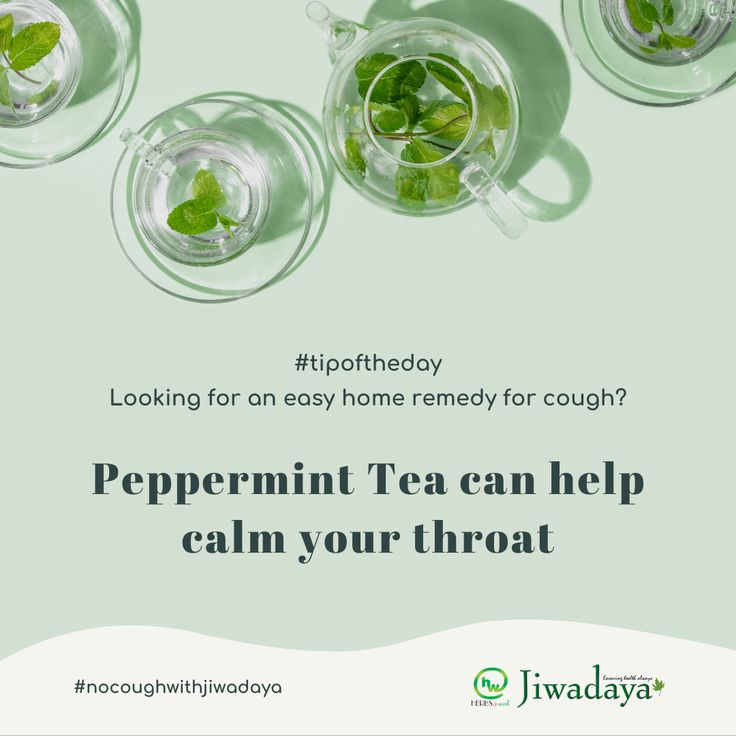
Source: pinimg.com
Peppermint tea, while generally safe and soothing, requires careful consideration when used with different age groups. Its potency and potential side effects can vary depending on age, body weight, and individual sensitivities. Understanding these variations is crucial for safe and effective use.
Peppermint Tea for Children
Children, particularly infants and toddlers, possess more sensitive digestive systems and are more susceptible to adverse reactions. Therefore, peppermint tea should be avoided for infants under six months old. For children aged six months to five years, only diluted peppermint tea should be considered, and even then, it’s advisable to consult a pediatrician first. The concentration of peppermint should be significantly lower than that for adults, and small quantities should be offered to assess any potential reactions.
Always prioritize a child’s overall health and consult a medical professional before introducing any herbal remedies.
Peppermint Tea for Adults
Adults generally tolerate peppermint tea well, but moderation is still key. Excessive consumption might lead to heartburn, acid reflux, or other digestive disturbances. Individuals with pre-existing conditions, such as gastroesophageal reflux disease (GERD), should exercise caution and potentially avoid peppermint tea altogether. While it’s generally safe for adults to enjoy a reasonable amount of peppermint tea daily, paying attention to the body’s response is important.
If any negative effects are experienced, it’s best to reduce consumption or discontinue use.
Peppermint Tea for the Elderly
The elderly, like children, have more delicate systems and often take multiple medications. Peppermint tea can interact with certain drugs, so it’s vital to consult a physician or pharmacist before incorporating it into their routine, especially if they have pre-existing health conditions such as liver or kidney disease. The elderly may also be more sensitive to the effects of peppermint, so starting with a small quantity and monitoring for any adverse reactions is recommended.
Furthermore, the elderly might have difficulty preparing the tea themselves, requiring assistance to ensure safe and proper preparation.
Recommended Dosages and Preparation Methods
| Age Group | Recommended Dosage | Preparation Method | Precautions |
|---|---|---|---|
| Infants (under 6 months) | Not recommended | N/A | May cause digestive upset |
| Children (6 months – 5 years) | 1/4 – 1/2 cup of very diluted tea, once daily | Steep 1 teaspoon of peppermint leaves in 1 cup of boiling water for 5 minutes, then dilute with an equal amount of water. | Monitor for allergic reactions or digestive upset; consult pediatrician before use. |
| Adults (18-65 years) | 1-2 cups per day | Steep 1-2 teaspoons of peppermint leaves in 1 cup of boiling water for 5-10 minutes. | Avoid excessive consumption; discontinue if experiencing adverse effects. |
| Elderly (65+ years) | 1/2 – 1 cup per day | Steep 1/2 – 1 teaspoon of peppermint leaves in 1 cup of boiling water for 5 minutes. | Consult physician before use, especially if taking other medications; monitor for any adverse reactions. |
Last Point: Treating Cold And Sore Throat With Peppermint Tea
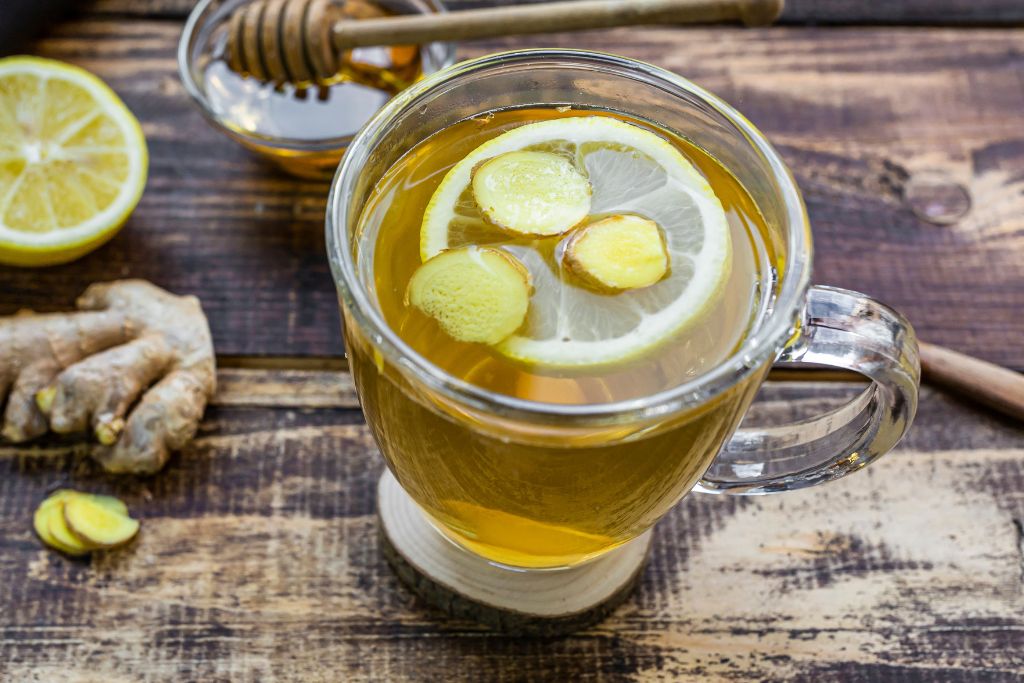
Source: com.au
So, is peppermint tea the miracle cure for your next cold or sore throat? While it’s not a replacement for medical advice, the evidence suggests it can be a helpful addition to your self-care routine. Its soothing properties, coupled with potential anti-inflammatory and analgesic effects, make it a worthy contender in the battle against cold and flu symptoms. Remember to always consult a healthcare professional if your symptoms worsen or persist.
But in the meantime, why not try a warm mug of peppermint tea and see if it brings you some much-needed comfort?
Common Queries
Can I give peppermint tea to my baby or toddler?
It’s generally recommended to avoid giving peppermint tea to infants and very young children. Always consult a pediatrician before introducing herbal teas to young children.
How much peppermint tea should I drink daily?
There’s no set amount, but moderate consumption (2-3 cups a day) is usually fine for most adults. Listen to your body and adjust accordingly.
Does peppermint tea interact with any medications?
Peppermint can interact with certain medications, so it’s best to consult your doctor or pharmacist if you’re on any prescription drugs.
Can I add anything else to my peppermint tea?
Absolutely! Honey, lemon, or even a splash of ginger can enhance the flavor and add extra soothing properties.
